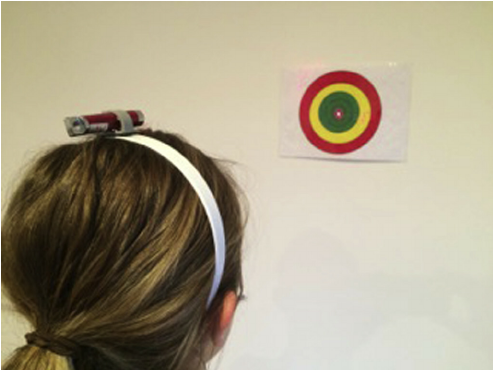Numerous studies have examined the relationship between muscle control, postural awareness and neck pain. The correlation between chronic and acute neck pain on deep neck flexor musculature is well documented in the literature. A systematic review analyzed Joint Position Sense Error (JPSE), which reflects a person’s ability to accurately return their head to a predefined target after different neck movements. The test involves attaching a laser-pointer to a headband on the patient and determining their accuracy of hitting a target placed on the wall (without looking). This gives us our degrees of error (or distance from the norm) with simple, everyday neck movements. We then assess the ability to trace basic, to more complex shapes in different planes of movement for more advanced testing and re-training.

Patients were grouped in the trial as traumatic (such as whiplash sustained in a motor vehicle accident), non-traumatic (pain without an incident) and a healthy control group. People with neck pain originating from trauma and people whose neck pain had developed gradually both had a higher joint error than those without neck pain. This implies that an increase in neck accuracy with movement may not be caused by soft tissue damage alone or neurological impairments following direct trauma. The data outlines that possible motor control impairments may actually contribute to the development of pain in the cervical region. The improved function of the JPSE for healthy controls can be used to argue that prior to trauma, we would expect greater accuracy, as is the goal with rehabilitation.
Treatment for neck pain patients should be individualized however should potentially include restoration of normal neck mechanics, fine motor control for deep neck flexors and extensors if clinically indicated and specific laser retraining for proprioceptive awareness.
If you are experiencing acute or chronic neck pain, have headaches or had whiplash, laser retraining may be a crucial component to your assessment and comprehensive rehabilitation program. Daniel is happy to answer any questions you may have and available for consultations at our Cottesloe and Claremont clinics.
Jull, G., Falla, D., Treleaven, J., Hodges, P., & Vincenzino, B. (2007). Retraining cervical joint position sense: the effect of two exercise regimes. Journal of Orthopaedic Research, 25 (3): 404-412.
de Vries, J., Ischebeck, B., Voogt, L., van der Geest, J., Janssen, M., Frens, M., & Kleinrensink, G. (2015). Joint position sense error in people with neck pain: A systematic review. Manual Therapy, 20 (6): 736-744. doi:10.1016/j.math.2015.04.015
